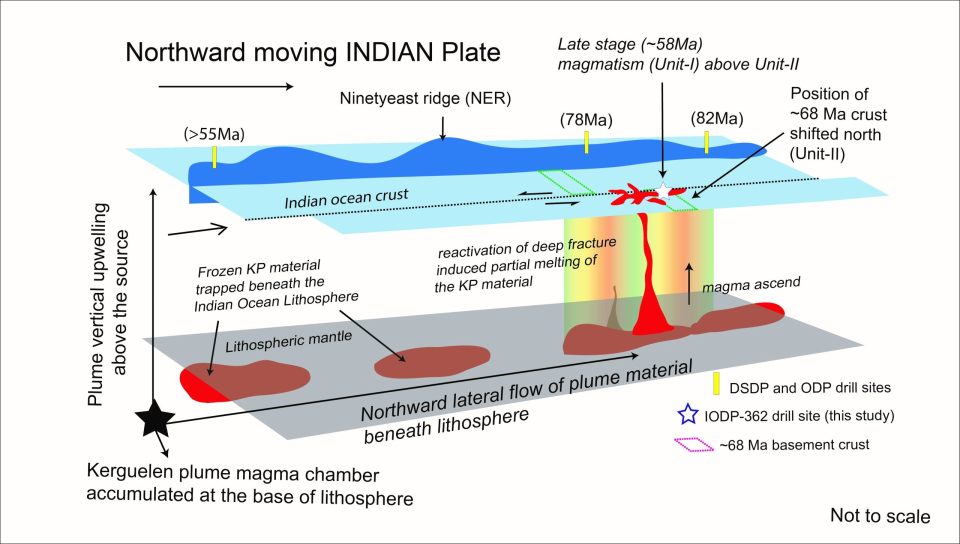
How far can earth’s tectonic plates drag the underlying lava?

A recent study by a team of scientists at the Goa-based National Centre for Polar and Ocean Research (NCPOR) has brought new insights into the critical processes involved in the movement of the earth’s tectonic plates.
The buoyant rising of hot and low-density magma or plumes from the Earth’s interior towards the surface leads to extensive volcanism and the creation of seamounts and volcanic chains above the ocean floor. However, a rising plume has to cut through the thick overlying lithosphere, the most rigid part of the earth, before it can reach the earth’s surface. Many times, the magma’s buoyant force is not sufficient to pierce through the lithosphere. In such cases, plumes tend to dump the material at sub-lithospheric depths.
When the tectonic plates that lie over the lithosphere move, they tend to drag the ponded materials along with them. A fundamental question that remains outstanding in understanding earth’s processes is how far a tectonic plate can drag the plume material at its base after its initial impact with the plume. The recent study at NCPOR has thrown some light on it.
Also read: How reliable is an eyewitness? New tech uses brainwaves to determine that
The team of scientists at the institute, an autonomous body under the Ministry of Earth Science, studied samples of igneous rocks collected from near the Ninety East Ridge in the Indian Ocean during an expedition under the International Ocean Discovery Program (IODP). (The Ninety East Ridge is an aseismic ridge located almost parallel to 90 degrees east longitude in the Indian Ocean. It is approximately 5,000 kilometres in length and has an average width of 200 km).
A detailed geochemical and isotopic investigation revealed that some basaltic samples were highly alkaline and had very similar compositions to those released by the Kerguelen hotspot in the Southern Indian Ocean. In addition, the minimum age of the alkaline samples was about 58 million years, much younger than the adjacent oceanic crust surrounding Ninety East Ridge (around 82-78 million years old). This observation was highly unusual.
The new study proposes that the Indian tectonic plate, which was contemporaneously moving northward at a very high speed, had dragged a considerable amount of Kerguelen plume material for more than 2000 km underneath the Indian lithosphere. Subsequent reactivation of deep fractures may have triggered decompression melting of the underlying plume material and emplaced as magmatic sills and lava flows near the Nighty East Region around 58 million years ago.
Also read: Mars news: Key life matter found, public help sought for cloud-spotting
The study was led by Dr. Dhananjai K Pandey, Scientist ‘F’ & Group Director (Geosciences), NCPOR. The team included Dr. Shoraisam Khogenkumar and Dr. Nisha Nair. They have published a report on their findings in the science journal, Journal of the Geological Society.


